Roofing and Sustainability: Which Options Are Better for the Environment?
April , 2023 | 7 min. read
By Kevin Mills

Times are rapidly changing, and roofing is an ever-evolving industry that many forget about. We're entering a new era of homeowners that are mainly concerned with sustainability, which means having a roof over their home that's better for the environment is becoming a must.
Choosing energy-efficient, durable, and long-lasting roofing materials are high on the priority lists of most when browsing through their options these days. There are a lot of gray areas when sustainable roofing is involved, however. Your image of sustainability may differ from that of your neighbor. Because there's so much left in question, we think this is the perfect opportunity to give you a quick rundown of "environmentally friendly" roofing.
At RoofCrafters, we've installed countless roofs of every type, shape, and size for nearly thirty years. We know that taking care of the environment is a considerable concern that grows yearly, and we see that roofing materials matter to homeowners. That being said, there's a lot to discuss in the realm of roof sustainability. Are roofing materials genuinely sustainable?
This article is a general guide regarding popular topics surrounding sustainable roofing. In a world full of options seemingly at your fingertips, knowing every one of them will help you find exactly what you want. By the time you finish reading, you'll learn a bit more about the world of environmentally friendly roofing. Let's begin the show!
What Makes Roofing Materials Sustainable?
When you think about what makes roofing environmentally friendly, you may consider where it's manufactured or what the raw materials consist of. Sustainability goes beyond that, however, and how the roof performs over time and how it's disposed of after it's used plays a crucial role in how "green" it is.
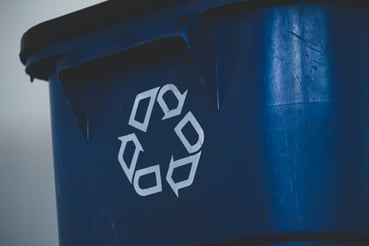
Essential factors that are highly considered in roofing are durability, longevity, and the material's resistance to heat absorption. Various roofing materials are known for their high heat reflectability and higher sustainability outcome, which helps drastically lower heat costs, making them more energy-efficient.
- Slate Roofing
- Metal Roofing
- Wood Shakes and Shingles
- Clay Tile Roofing
Tip: When looking for a sustainable roofing option, check to see if your chosen material contains recycled materials. The higher the percentage, the more environmentally friendly, though keep in mind that it may be less durable. Ensure the material can be recycled again when it's time to replace it.
Roof Sustainability: Notes and Comparisons
When questioning sustainability, check the source of the raw material. According to the definition, a sustainable product or material is made without permanently damaging or depleting its resources. You may also include ensuring that sourcing the material doesn't cause irreparable damage to the Earth.

Several factors go into determining if a roofing material is technically sustainable, and there's a fine line between truly "green" and not green but slightly sustainable. In the roofing world, finding an option that's 100% kind to the environment may not happen, but you can browse choices that are better for our planet.
Metal Roofing
Metal roofs do require a significant amount of energy to produce. Still, they're usually high in recycled material and are easy to dispose of in an ethical way at the end of their lifetime. Metal is highly conductive of heat, and while metal roofing does reflect it well, it has to be adequately insulated to truly save on energy. Steel and aluminum are common resources used to make metal roofing, but since they're materials harvested from the Earth, they're technically not completely sustainable. However, metal roofing is one of the more environmentally-friendly roof choices.
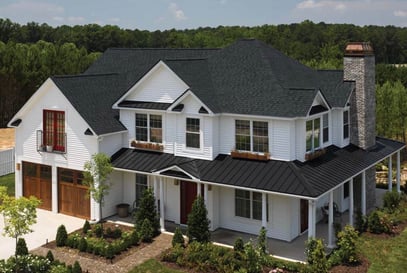
Slate Roofing
Slate is stunning and will outlast nearly every other roofing type and even your home itself. It's also cumbersome and expensive, and it requires abundant resources to mine, shape, and transport it. While mining stone isn't a sustainable practice, many homeowners that can bare the cost prefer it over materials made of petroleum or plastic.
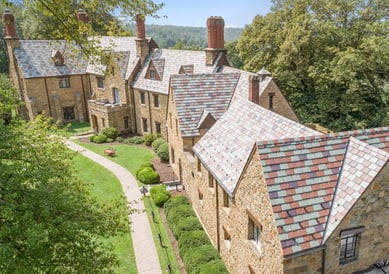
Clay Tile Roofing
Clay tiles are durable, hardwearing, and cost quite a bit. Authentic clay tiles are made with natural clay that's shaped and fired. The clay used for these tiles is a plentiful resource, and many manufacturers claim they're sustainable for that reason.
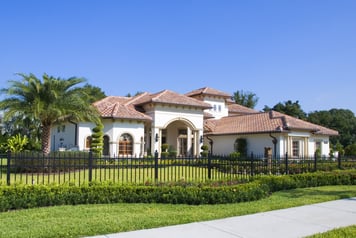
Wood Shakes and Shingles
According to experts, these are one of the only genuinely sustainable roofing options because wood is a sustainable resource if it's harvested from ethical sources. Wood shakes and shingles do require more energy to produce, however, and aren't as durable as some of the other options mentioned. Disposing of wood is easy as long as it hasn't been treated with preservatives and synthetic additives, which is standard practice. Wood is a more sustainable choice, especially if you live in an area that produces it locally.
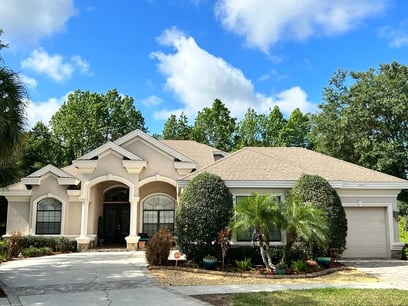
Asphalt Shingles
Asphalt shingles are one of the most common and popular roof choices, so other options have big shoes to fill. They're moderately durable, depending on which type you pick, and offer decent heat reflectivity. They're made with various types of materials, from paper to tar to fiberglass. Old shingles aren't easy to recycle and are not biodegradable. They're also a petroleum product, meaning they could be higher on the sustainability list.
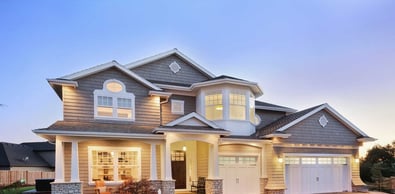
Living Roofs
"Green" or living roofs are rising in popularity because they're fun and considered more environmentally conscious. A living roof is a flat or low-slope roof that's significantly or fully covered in plants/vegetation. Green roofs typically contain a synthetic waterproof membrane and a growing medium (like soil.) Green roofs have benefits and drawbacks in terms of sustainability.

They're high maintenance, expensive to install, and the membrane is made of rubber, making it unsustainable. On the flip side, they help provide insulation for your home, reduce heat, and absorb rainwater. Your home will likely need additional support to hold a green roof, as well, because they're heavy.
Is Roofing Sustainability a Big Deal?
In the grand scheme of things, yes, sustainability is a big deal. As the world changes, being more mindful of where our home's resources are coming from is helpful for our planet in many ways. If you want to reduce your carbon footprint, options like metal and clay tile roofing may be more suitable for you than other types, like asphalt shingles. Making small contributions to your home's sustainability level will help the environment and may even improve the overall efficiency of your home.
To learn more about what roof options are available to you, check out our learning center! From slate to shingle roofing, we have the resources you need to make the right decision for you and your home.
If you're ready to begin the process of choosing a sustainable roofing option, RoofCrafters is thrilled to assist you! We want you to know that an energy-efficient and fresh new roof is only a dial away. To get in touch with one of our friendly representatives, take a leap over to our contact page.
My name is Kevin Mills, and I am the lead estimator for RoofCrafters’ Tampa division. I’m originally from Michigan, and I enjoy hunting, fishing, and spending any free time outdoors. What I’m most passionate about, though, is helping business owners and homeowners alike achieve their roofing goals, all while providing a seamless customer journey.





